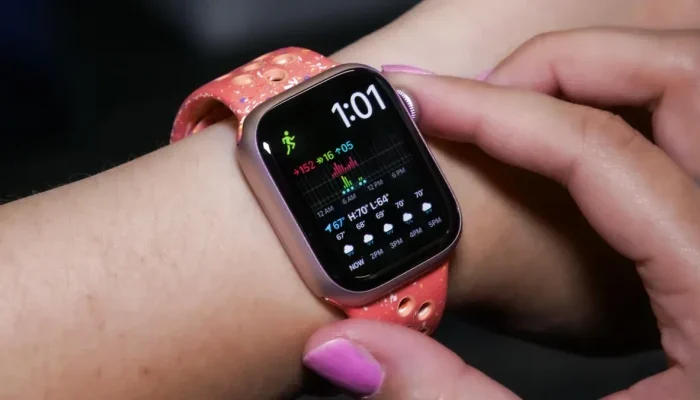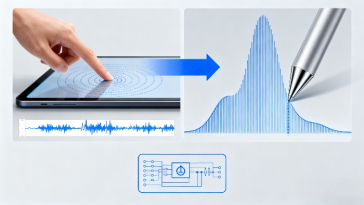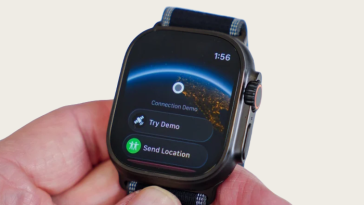Smartwatches have evolved into powerful communication tools, boasting a range of connectivity options that impact user experience, device independence, and functionality. This blog explores the roles of Bluetooth, Wi-Fi, and eSIM in smartwatches—how each works, the impact of technological upgrades, and their future development trends.
Bluetooth: The Backbone of Smartwatch Communication
Applications of Bluetooth in Smartwatches
Bluetooth is the fundamental link between smartwatches and smartphones. Its primary applications include:
- Call Functions: Bluetooth enables direct calling and receiving calls on the smartwatch using the phone’s network, allowing users to answer calls hands-free without picking up the phone. The watch routes audio through its own speaker and microphone, facilitating convenient, on-the-go communication.
- Notifications and Messaging: Smartwatches use Bluetooth to mirror notifications, texts, and app alerts from the smartphone, ensuring users stay updated in real time.
- Data Synchronization: Health data, activity tracking, and settings are seamlessly synced between the watch and phone via Bluetooth, creating a unified user experience.
Impact of Bluetooth Version Upgrades
Bluetooth technology has seen rapid progression, with each version introducing improvements in connection stability, energy efficiency, and data transmission speed:
- Stability: Bluetooth 5.3 and newer versions bring enhanced connection reliability through smarter pairing and persistent connections, reducing dropouts during calls or data sync.
- Power Consumption: New protocols lower the frequency of data exchanges, which significantly reduces idle power usage and extends battery life for always-on devices like smartwatches.
- Speed: Higher data rates in recent versions mean faster sync times for messages and health data—essential for modern, feature-rich wearables.
As of mid-2025, Bluetooth 5.3 is standard in leading smartwatches, providing an optimal balance of performance and efficiency.1
Wi-Fi: Enabling Greater Independence
Role of Wi-Fi in Smartwatches
Wi-Fi connectivity elevates smartwatches beyond Bluetooth’s short-range constraints, offering these key benefits:
- Independent Internet Access: Smartwatches with Wi-Fi can access the internet, download apps, or stream music even when the smartphone is out of range—ideal for runners or travelers.2
- Automatic Network Sync: Many models auto-connect to known Wi-Fi networks synced from the paired smartphone, ensuring seamless transitions and continuous access to cloud-based features.3
- Real-time Data Updates: Wi-Fi allows smartwatches to receive notifications, update apps, and back up data directly, regardless of Bluetooth connection status.
Advantages in Different Scenarios
In environments like gyms, offices, or large homes where the smartphone might be left behind, Wi-Fi ensures smartwatches remain connected, providing untethered access to notifications and internet-dependent features.2
eSIM: Pioneering Truly Independent Communication
eSIM Technology and Its Benefits
eSIM (embedded SIM) technology transforms smartwatches into standalone devices with their own cellular connectivity:
- Phone-free Communication: With eSIM, users can make calls, send texts, and access the internet directly from the watch, untethered from their smartphones.
- Flexibility: eSIM allows for operator switching without the need to swap physical SIM cards, facilitating global roaming and plan customization.4
Regional Adoption and Market Trends
- North America: High eSIM smartwatch adoption, robust carrier support, and a focus on health-monitoring drive market share. Growth is steady, supported by tech-savvy consumers and established infrastructure.
- Asia-Pacific: Fastest-growing market due to rising income, increased tech awareness, and substantial manufacturer investment. Countries like China, India, and Japan see strong adoption as eSIM becomes integral to wearable tech.
- Europe: Significant growth driven by digital health solutions and connected lifestyle trends, particularly in Germany, France, and the UK.5
As of 2024, eSIM devices, especially smartwatches, are surging in popularity, with the market projected to maintain double-digit growth through 2030.4
Looking Ahead: 5G and the Future of Smartwatch Communication
Emerging connectivity standards like 5G will further revolutionize the smartwatch landscape:
- Ultra-Fast Data and Low Latency: 5G enables real-time health monitoring, augmented reality features, and seamless video calls—all directly on the wrist.
- App Independence: New capabilities will push smartwatches to handle complex, data-intensive apps without relying on a paired smartphone.
- Market Projections: By 2027, 5G-enabled smartwatches are expected to be the norm, offering unparalleled connectivity and user independence.6
Conclusion
Communication features in smartwatches—Bluetooth, Wi-Fi, and eSIM—are rapidly evolving. Bluetooth delivers efficient phone integration and power savings, while Wi-Fi opens up standalone internet use. eSIM technology grants true independence, and the advent of 5G promises even greater functionality and freedom in the near future. As related standards and market adoption rise globally, smartwatches are poised to become even more indispensable hubs of digital life.
- https://alexanderobregon.substack.com/p/every-bluetooth-update-from-50-to
- https://www.blackview.hk/blog/guides/do-smartwatches-have-wifi
- https://www.samsung.com/us/support/answer/ANS10002854/
- https://www.verifiedmarketreports.com/product/esim-smart-watch-market/
- https://dataintelo.com/report/global-esim-smart-watch-market
- https://vositone.com/5g-smartwatches-2025-killing-traditional-wearables.html





 No products in the cart.
No products in the cart.